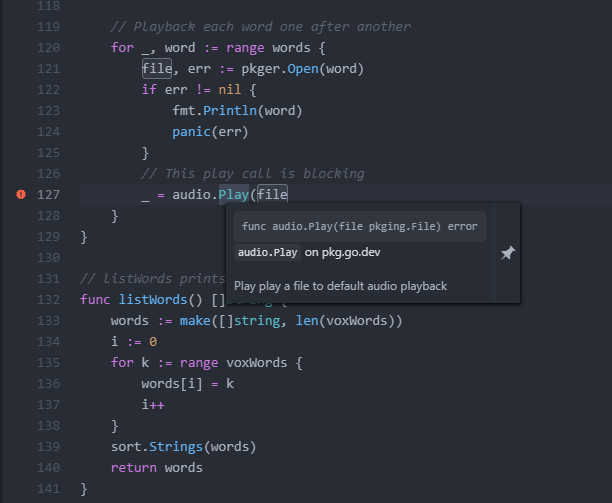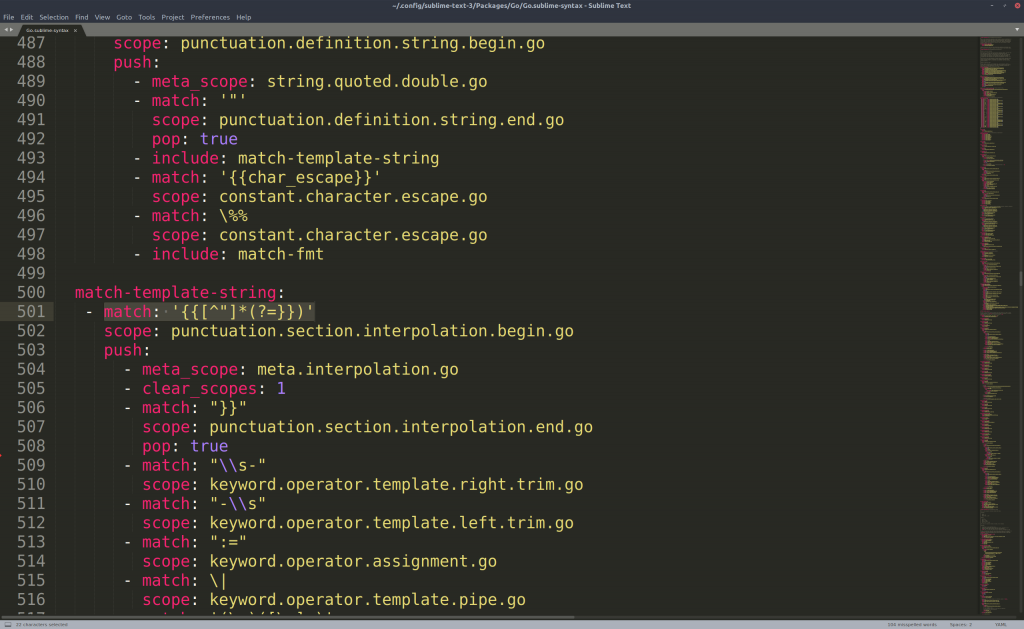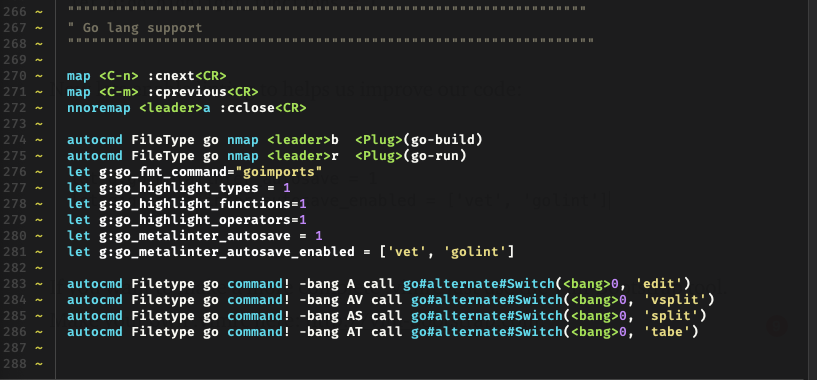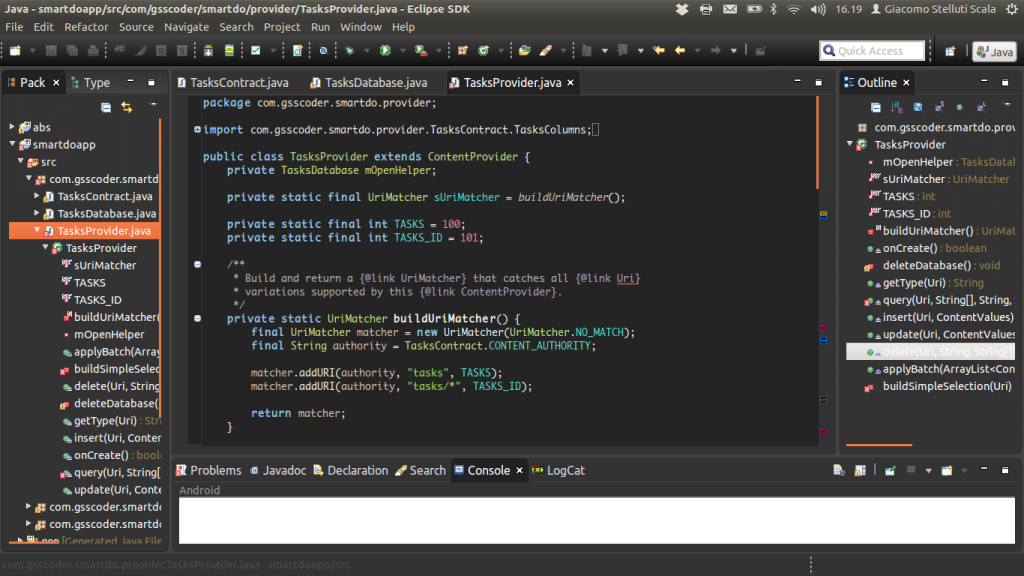Go is a procedural programming language.
Go is a statically typed, compiled programming language initially developed at Google in the year 2007 by Robert Griesemer, Rob Pike, and Ken Thompson. It is a statically-typed language having syntax similar to that of C. The Go programming language was launched in November 2009 and is used in some of the Google’s production systems.
Code editor gives you a platform where you write your source code. Following are the list of text editors:
Table of content
- Atom
- Visual Studio Code
- Sublime Text.
- Vim
- Eclipse IDE.
Atom

Developers can take advantage of the better language integration of the Atom IDE with a better editor. The open source Go-Plus package makes it even easier for developers to code in Go.
Atom is a free and open-source text and source code editor for macOS, Linux, and Microsoft Windows
Atom is a modern, powerful IDE, which can be used for many computer programming languages including C .It is one of the highly configurable text editors. Atom is a desktop application built using web technologies. Most of the extending packages have free software licenses and are community-built and maintained.
History
Atom was developed by GitHub as a text editor. Facebook then developed the Nuclide and Atom IDE projects to turn Atom into an integrated development environment (IDE), but development stopped in December 2018.
Features
- Option to find and replace text
- Cross-platform support
- Smart autocompletion
- Package manager
- Multiple panes
- Atom is one of the highly configurable text editors
- Supports command palette
Alternatives to Atom for Go programming
- Brackets.
- cell.
- Element.
- PyCharm.
- Vim.
Tutorials for Atom
Visual Studio Code

The Go extension for Visual Studio Code provides a wide range of features that help Go developers write clean and efficient code. With built-in IntelliSense, you get editing features such as code completion, quick info, and parameter info.
Visual Studio Code is a Structured code editor with support for development operations like debugging, task running, and version control. It aims to provide just the tools a developer needs for a quick code-build-debug cycle and leaves more complex workflows to fuller featured IDEs, such as Visual Studio IDE
Features
- VScode support for hundreds of languages, VS Code helps you be instantly productive with syntax highlighting, bracket-matching, auto-indentation, box-selection, snippets, and more. Intuitive keyboard shortcuts, easy customization and community-contributed keyboard shortcut mappings let you navigate your code with ease.
- The Visual Studio project files are MSBuild files. You can compile them at the command line using MSBuild and integrate the build command in your build scripts or in a CI system
- It has an inbuilt Command Line Interface.
- Visual Studio Code comes with an integrated Git that allows for pulling, committing, and publishing using a simple GUI.
- It has a rich API for enabling tools for debugging.
- Intelligent Code completion, code refactoring, and snippets
Alternative of Visual Studio Code
- PyCharm
- Sublime Text
- SonarQube
- Eclipse.
- Sublime Text.
- Atom.
- CodeLite.
- CodeWarrior.
Sublime Text

Sublime Text bills itself as a “sophisticated text editor for code, markup, and prose.” Originally released over a decade ago in January 2008, Sublime Text is now in its fourth major version and supports Mac, Windows, and Linux.
“Goto Anything,” quick navigation to files, symbols, or lines
“Command palette” uses adaptive matching for quick keyboard invocation of arbitrary commands
Simultaneous editing: simultaneously make the same interactive changes to multiple selected areas
Python-based plugin API.
Project-specific preferences Extensive customizability via JSON settings files, including project-specific and platform-specific settings Cross-platform (Windows, macOS, and Linux) and Supportive Plugins for cross-platform Compatible with many language grammars from TextMate.
History
Sublime Text 2.0.2 was released on 8 July 2013. Changes from the first version of the software as promoted by Skinner on the official Sublime blog include Retina display support and “Quick Skip Next” functionality
Advantage
It is capable of opening and editing multiple files at a time, making it an ideal text editor for large projects. Also, Sublime has a wonderful navigation feature called “GoTo” that permits users to access any element of their code at a moment’s notice.
vim

vim stand for “Vi IMproved”.It is a free and open-source, screen-based text editor program for Unix.Vim is another text editor software developers can use to write, edit, and amend Go code. Like Sublime Text and Visual Studio Code, it has an extensive plugin system that allows you to extend its core capabilities.The Vim code editor has various plugins that you can install to write Golang code. The vim-go plugin adds Go language support for Vim and offers additional features software developers can leverage to create Go solutions.
History
Vim’s forerunner, Stevie (ST Editor for VI Enthusiasts), was created by Tim Thompson for the Atari ST in 1987 and further developed by Tony Andrews and G.R. (Fred) Walter.
Since its release for the Amiga, cross-platform development has made it available on many other systems. In 2006, it was voted the most popular editor amongst Linux Journal readers; in 2015 the Stack Overflow developer survey found it to be the third most popular text editor, and in 2019 the fifth most popular development environment.
Features
- It is Free and Open Source
- It is Always Available
- It Is Well Documented
- It Has A Vibrant Community
- It Is Very Customizable and Extensible
- It Has Portable Configurations
- It Uses Less Amount of System Resources
- It Supports All Programming Languages and File Formats
- It is Very Popular in the Linux World
Alternatives to Vim
- Neovim.
- Atom.
- Notepad++
- Sublime Text.
- Visual Studio Code.
- Brackets.
- CodeMirror.
Eclipse

Eclipse is one of the most popular, powerful and another software application developers can use to write clean, efficient, and effective Go code. Eclipse is an integrated development environment (IDE) used in computer programming. Go developers that want to use Eclipse IDE will need to install one of several available plugins. These include Go-CodeMix and GoClipse.
This is an open-source IDE that is available for Windows, macOS, and Linux
It contains a base workspace and an extensible plug-in system for customizing the environment. It is the second-most-popular IDE for Java development, and, until 2016, was the most popular.[6] Eclipse is written mostly in Java and its primary use is for developing Java applications, but it may also be used to develop applications in other programming languages via plug-ins, including Ada, ABAP, C, C++, C#, Clojure, COBOL, D, Erlang, Fortran, Groovy, Haskell, JavaScript, Julia, Lasso, Lua, NATURAL, Perl, PHP, Prolog, Python, R, Ruby (including Ruby on Rails framework), Rust, Scala, and Scheme.
History of Eclipse Code Editors
Eclipse was inspired by the Smalltalk-based Visual Age family of integrated development environment (IDE) products.
In November 2001, a consortium was formed with a board of stewards to further the development of Eclipse as open-source software.
Eclipse 3.0 (released on 21 June 2004) selected the OSGi Service Platform specifications as the runtime architecture.
The Association for Computing Machinery recognized Eclipse with the 2011 ACM Software Systems Award on 26 April 2012.
Features
- Coding shortcuts
- Autocorrection
- Refactoring
- Diffing files
- Organizing reports
- Formatting source codes
Alternative of eclipse code editors for go programming
- LiteIDE.
- Goland.
- Wide.
- Vim.
- Komodo.
- Sublime Text with GoSublime.
Tutorials for Eclipse Code Editors
Best Courses and Insitute for learning
If you want certification course for such top course. So please visit “Devopsschool.com”. You will find more certification courses here.

I’m a DevOps/SRE/DevSecOps/Cloud Expert passionate about sharing knowledge and experiences. I am working at Cotocus. I blog tech insights at DevOps School, travel stories at Holiday Landmark, stock market tips at Stocks Mantra, health and fitness guidance at My Medic Plus, product reviews at I reviewed , and SEO strategies at Wizbrand.
Please find my social handles as below;
Rajesh Kumar Personal Website
Rajesh Kumar at YOUTUBE
Rajesh Kumar at INSTAGRAM
Rajesh Kumar at X
Rajesh Kumar at FACEBOOK
Rajesh Kumar at LINKEDIN
Rajesh Kumar at PINTEREST
Rajesh Kumar at QUORA
Rajesh Kumar at WIZBRAND

 Starting: 1st of Every Month
Starting: 1st of Every Month  +91 8409492687
+91 8409492687  Contact@DevOpsSchool.com
Contact@DevOpsSchool.com
